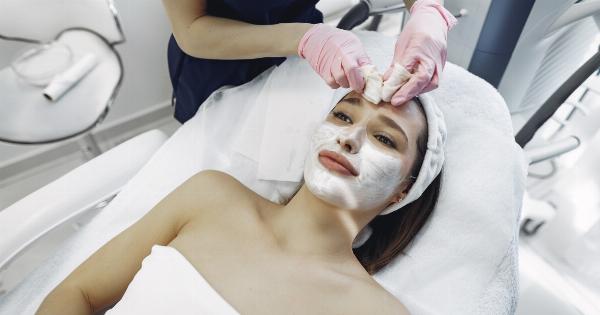Getting a tattoo can be a significant decision for anyone, but for individuals with vitiligo, there are additional risks and considerations to keep in mind.
Vitiligo is a long-term condition characterized by the loss of skin color in patches, making the process of tattooing more complex and potentially problematic. In this article, we will explore the risks associated with getting a tattoo when you have vitiligo and discuss some important factors to consider beforehand.
Understanding Vitiligo
Vitiligo is a skin disorder that affects approximately 1-2% of the global population. It occurs due to the destruction of melanocytes, the cells responsible for producing the pigment melanin.
This results in the development of white patches on various areas of the body, including the skin, hair, and even the inside of the mouth.
While vitiligo is generally considered harmless and non-contagious, it can have a significant psychological impact on individuals living with the condition.
The visible contrast between depigmented and normally pigmented skin can lead to feelings of self-consciousness, lower self-esteem, and even social isolation.
Potential Risks of Tattooing on Vitiligo-Affected Skin
Tattoos involve injecting ink into the dermis layer of the skin using small needles. When it comes to vitiligo-affected skin, several risks need to be considered before getting a tattoo:.
1. Altered Skin Texture
Vitiligo patches often have a different texture compared to the surrounding skin. The areas of depigmentation may be smoother, rougher, or even slightly raised.
Tattooing over such areas may result in an inconsistent appearance, as the ink may distribute unevenly due to the altered texture.
2. Uneven Color Distribution
Specifically in vitiligo-affected skin, the lack of melanin can affect how the tattoo pigment is absorbed and dispersed. This can lead to uneven color distribution, resulting in a patchy or faded appearance.
Achieving vibrant and uniform colors may be more challenging on areas with vitiligo.
3. Melanocyte Function Impairment
Vitiligo involves the destruction of melanocytes, which are responsible for producing melanin. Tattooing relies on the interaction between the pigment and melanocytes.
In areas affected by vitiligo, the absence of functioning melanocytes may impede color retention or even cause the tattoo to fade over time.
4. Risk of Koebnerization
The Koebner phenomenon refers to the development of new skin lesions or depigmentation in response to trauma or injury to the skin.
Tattooing involves puncturing the skin repeatedly, which can potentially trigger the Koebner phenomenon in individuals with vitiligo. This may cause the depigmentation to spread, resulting in larger patches or even new areas of vitiligo.
5. Allergic Reactions
Some individuals with vitiligo may be more prone to allergies, including an increased risk of developing sensitivities to tattoo ink. Allergic reactions to tattoo pigments can lead to inflammation, itching, and swelling in the tattooed area.
In severe cases, they may even cause blistering or scarring.
6. Difficulty in Skin Examination
Vitiligo patches can vary in size, shape, and location. This can sometimes make it more challenging for both the individual and the tattoo artist to thoroughly examine the skin for potential abnormalities or signs of skin cancer.
Early detection of skin cancer is crucial, and the presence of vitiligo may complicate the process.
7. Psychological Considerations
While not necessarily a direct physical risk, it is essential to consider the psychological impact of getting a tattoo on vitiligo-affected skin.
The decision to permanently alter the appearance of the skin should be approached with careful consideration, as it may influence body image, self-acceptance, and how others perceive the individual.
Precautions and Considerations
While there are risks associated with getting a tattoo when you have vitiligo, it does not mean that it is impossible or out of the question.
Here are some precautions and considerations to keep in mind if you are considering getting a tattoo with vitiligo:.
1. Consultation with a Dermatologist
Before getting a tattoo, it is highly recommended to consult with a dermatologist who specializes in vitiligo. They can assess your specific condition, advise on potential risks, and provide personalized recommendations for your situation.
Their expertise is invaluable in guiding you through the decision-making process.
2. Choosing a Skillful Tattoo Artist
It is crucial to select a tattoo artist with experience in working with vitiligo-affected skin. They should be aware of the unique challenges and be skilled in adapting their techniques to ensure the best possible outcome.
Research and communicate with artists who have successfully tattooed individuals with vitiligo in the past.
3. Patch Testing for Allergies
Before committing to a full tattoo, consider patch testing the tattoo inks on a small vitiligo-affected area. This will help identify any potential allergic reactions or sensitivity to the pigment.
If an allergic reaction occurs, it is crucial to discuss alternative pigments with your dermatologist and tattoo artist.
4. Start Small and Monitor the Results
Starting with a small tattoo in an area that is less visible allows both you and your tattoo artist to gauge how the ink interacts with the vitiligo-affected skin.
This enables you to evaluate color retention, potential fading, and how your skin reacts during the healing process.
5. Regular Skin Examinations
Even after getting a tattoo, it is essential to continue regular skin examinations to monitor for any changes, particularly in areas of vitiligo.
Report any concerns or unusual developments to your dermatologist promptly to ensure early detection of any potential skin conditions or complications.
Conclusion
Getting a tattoo with vitiligo can present additional risks compared to tattooing healthy skin.
The altered skin texture, uneven color distribution, impaired melanocyte function, risk of Koebnerization, allergic reactions, and potential difficulty in skin examination are all crucial considerations. However, with appropriate precautions, consultation with a dermatologist, and collaboration with skilled tattoo artists, individuals with vitiligo can still achieve beautiful tattoos while minimizing potential risks.





























